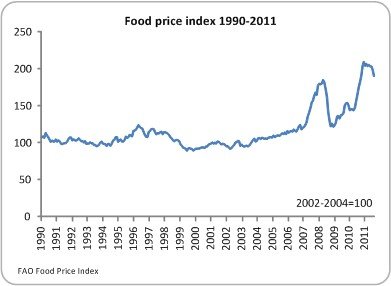by Seth Kaplan | Apr 12, 2012 | Economics and development

As the competition for president of the World Bank approaches its final stages, it is worth considering what changes ought to be brought in by the new person. One area in need of reform is the Bank’s system of country classifications. Although Robert Zoellick pushed the World Bank to open its much-prized treasure chest of data to the public during his five-year term as president, he did little to reform how the World Bank conceptualized that data. Changing how countries are classified would have a wide impact on the whole development community.
For instance, look at all the discussion in development policy circles about the sharp reduction in the number of low-income countries in recent years. Some believe this news should be trumpeted as a policy success. For others, the reduction suggests that there is a “New Bottom Billion” of poor people living in middle-income countries, forcing a change in donor focus. For yet another group, it indicates that foreign aid as a concept should be updated to blend more loans with grant money.
But has all that much changed? Does the World Bank country classifications accurately identify the countries in need of outside assistance? (more…)
by David Steven | Nov 4, 2011 | Economics and development, Global Dashboard
The good news: poverty is in retreat. The bad news: hunger isn’t. That’s the headline finding for the first Millennium Development Goal , which aims to halve the proportion of people living on less than $1.25 a day and the proportion of people living in hunger between 1990 and 2015.
Great strides have been made on poverty, as I explained in a recent post, with the proportion of the poor projected to fall to 14.4% of the population of developing countries, from 41.7% in 1990. But what about hunger?
According to the UN’s 2011 assessment of the MDGs, the news is not good. In 1990, 828m people were hungry or 20% of the population of developing countries. Progress has been very slow since then:
The proportion of people in the developing world who went hungry in 2005-2007 remained stable at 16 percent [837m people], despite significant reductions in extreme poverty. Based on this trend, and in light of the economic crisis and rising food prices, it will be difficult to meet the hunger-reduction target in many regions of the developing world.
But hang on a minute. Why is the UN trotting out data for 2005-2007? That’s before the global food crisis, which hit at the same time as the financial crisis and has been just as slow to go away.
Food prices hit rock bottom in 1999, but then rose quickly with vicious increases in 2007 and 2008 (20% and 18%) and 2010 and 2011 (17% and 28%) as illustrated in the chart below. Yet we’re still relying on data from five years ago to estimate hunger.

The UN reported ‘dire’ news of a spike in its 2009 and 2010 MDG reports, with an estimate of more than 1 billion people hungry by 2009. But then it backed off in 2011, simply reporting the old data (which, oddly and without explanation, had been revised up slightly for all years, including 1990).
What gives? The problem is that our data on hunger are extremely patchy and rely on assumptions so heroic that I am left wondering if we are currently able to say anything useful about global hunger at all. (more…)
by David Steven | Nov 1, 2011 | Economics and development, Global Dashboard
The MDGs are so over
Having just been rude about one World Bank report, here’s a positive review of another – the Global Monitoring Report 2011, which the Bank produces jointly with the IMF.
The GMR updates progress against the Millennium Development Goals – targets that were set as the culmination of a push throughout the 1990s to take poverty to the centre of the international agenda.
For a long time, it seemed that the MDGs were going to be an embarrassing failure. In 2009, as the UN prepared for the 2010 MDG review conference, Kofi Annan rang the alarm:
We have been moving too slowly to meet our goals. And today, we face a global economic crisis whose full repercussions have yet to be felt. At the very least, it will throw us off course in a number of key areas, particularly in the developing countries. At worst, it could prevent us from keeping our promises, plunging millions more into poverty and posing a risk of social and political unrest. That is an outcome we must avoid at all costs.
The MDGs’ many critics felt vindicated. In particular, Bill “just asking that aid benefit the poor” Easterly was over the moon. “Let’s face it: it’s over,” he wrote. “The MDGs will not be met.” Idealistic development campaigners had wasted their time on a set of arbitrary and poorly designed goals. Africa had been deliberately made to look like a failure, in what was an unforgiveable set up.

The 2010 MDG summit was a somewhat sombre affair. Sir Bob Geldof (seen saluting the troops, above) demanded that all 189 leaders who agreed the Millennium Declaration should be pulled out of retirement (or the ground, if applicable) to issue a personal apology to him, and the world’s poor. [OK – I made that bit up.]
But wait a minute…
(more…)
by David Steven | Mar 1, 2010 | Africa
Xavier Sala-i-Martin and Maxim Pinkovskiy today published a working paper today that drops the following bombshell (here’s a free version):
Our main conclusion is that Africa is reducing poverty, and doing it much faster than we thought. The growth from the period 1995-2006, far from benefiting only the elites, has been sufficiently widely spread that both total African inequality and African within-country inequality actually declined over this period. In particular, the speed at which Africa has reduced poverty since 1995 puts it on track to achieve the Millennium Development Goal of halving poverty relative to 1990 by 2015 on time or, at worst, a couple of years late. If Congo-Zaire converges to Africa once it is stabilized, the MDG will be achieved by 2012, three years before the target date. These results are qualitatively robust to changes in our methodology, including using different data sources and assumptions for what happens to inequality when inequality data is not available.
Not much reaction yet – but I’m intrigued to see what other economists are going to make of their work…
Update: Xavier Sala-i-Martin has a wonderfully crazy Columbia University website – he likes FC Barcelona, Salvador Dali and Beavis and Butthead.
Update II: These Economist articles from 2004 (one, two) offer useful background. The crux of the matter seems to be that Sala-i-Martin and Pinkovskiy use GDP to measure poverty (working out distribution of income from household surveys) – the World Bank’s figures are derived directly from the surveys themselves.
by Mark Weston | Feb 5, 2010 | Africa, Economics and development
I’ve been in Freetown for a couple of weeks now and am starting to get my head around the place. Sierra Leone has only recently climbed off the foot of the UN Human Development Index, but signs of poverty, which people in the West – where its most abject form is mostly confined to society’s margins – can go long periods without glimpsing, are everywhere.
Among the most arresting are the crowds gazing at DVDs playing in shops; the emptiness of markets after festivals; the accused dressing up for court in clean T-shirt and flip flops; young African girls on the beach with old white men; the hordes of disabled people – not just amputees from the war but also victims of polio, leprosy and unhealed fractures; beggars of all ages on every street corner; the ubiquity of slums, which as well as having whole districts to themselves also fill in the gaps in more affluent areas; billboards telling people to beware of counterfeit medicines; people collecting used plastic water bottles; the popularity of lottery outlets; car engines being switched off going downhill; children outside a bar at night using the electric light from inside to see their homework; stalls selling individual cigarrettes, pills and teabags; incessant and insistent requests for money or help with getting to the UK, even by people who work; the huge number of working children; and, of course, the proliferation of NGOs.
And finally an audible indicator of poverty, in the shape of a complaint made to me last weekend by an old man in a slum: “We should be shitting four or five times a week,” he said, “but people here only shit twice a week.”



